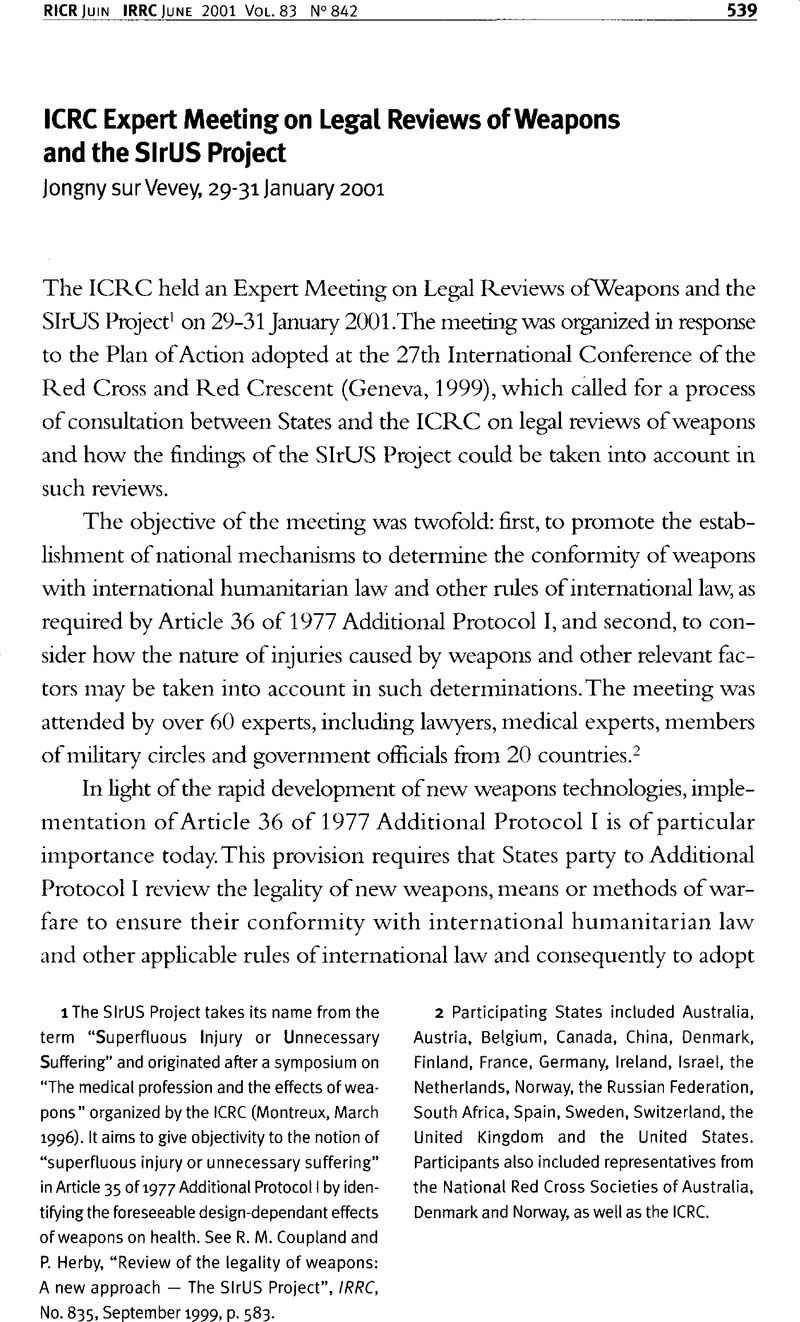Article contents
ICRC Expert Meeting on Legal Reviews of Weapons and the SlrUS Project
Published online by Cambridge University Press: 19 April 2010
Abstract

- Type
- Faits et documents/Reports and documents
- Information
- Copyright
- Copyright © International Committee of the Red Cross 2001
References
1 The SlrUS Project takes its name from the term “Superfluous Injury or Unnecessary Suffering” and originated after a symposium on “The medical profession and the effects of weapons ” organized by the ICRC (Montreux, March 1996). It aims to give objectivity to the notion of “superfluous injury or unnecessary suffering” in Article 35 of 1977 Additional Protocol I by identifying the foreseeable design-dependant effects of weapons on health. See Coupland, R. M. and Herby, P., “Review of the legality of weapons: A new approach — The SlrUS Project”, IRRC, No. 835, September 1999, p. 583Google Scholar.
2 Participating States included Australia, Austria, Belgium, Canada, China, Denmark, Finland, France, Germany, Ireland, Israel, the Netherlands, Norway, the Russian Federation, South Africa, Spain, Sweden, Switzerland, the United Kingdom and the United States, Participants also included representatives from the National Red Cross Societies of Australia, Denmark and Norway, as well as the ICRC.
3 Article 36 states: “In the study, development, acquisition oradoption of a new weapon, means or method of warfare, a High Contracting Party is under an obligation to determine whether its employment would, in some or all circumstances, be prohibited by this Protocol or by any other rule of international law applicable to the High Contracting Party.”
4 According to information available at the ICRC, Australia, Germany, Norway, Sweden and the United States are among the few countries with national mechanisms or procedures to review the legality of weapons.
5 For example, Article 35(2) prohibits the use of “weapons, projectiles and material and methods of warfare of a nature to cause superfluous injury or unnecessary suffering”, while Article 35(3) prohibits the use of “methods or means of warfare which are intended, or may be expected, to cause widespread, long-term and severe damage to the natural environment”.
6 Participants based their discussions on an ICRC document entitled “The SIrUS Project and Reviewing the Legality of New Weapons”(January 2000).
- 2
- Cited by


